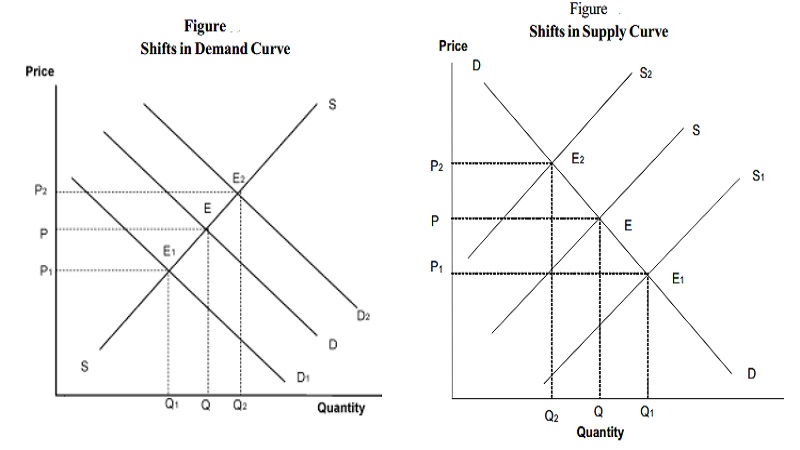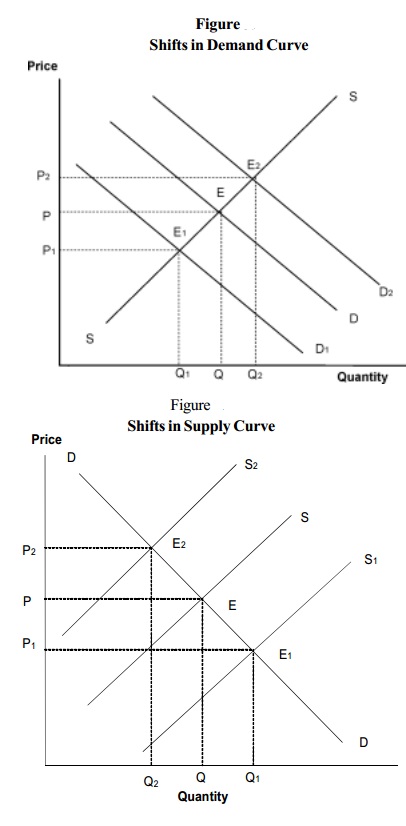Chapter: 11th 12th std standard Indian Economy Economic status Higher secondary school College
Shift in Demand and Supply

Shift in Demand and Supply
The market equilibrium attained above is temporary. It cannot be retained for a long period. It is because demand and supply conditions keep changing frequently. Such changes occur due to many variables other than price. These changes occur independently of price. We will see the causes and nature of such changes that influence demand and supply.
We have already seen that price is the main factor affecting demand and supply keeping 'other things' constant. What are the 'other things'? Suppose, those 'other things' are not constant but changing, what will happen to demand and supply? Note that any change in these determinants of demand and supply will shift the demand curve and supply curve. These shifts will also bring new equilibrium.
Shift in Demand
The 'other things' that affect demand are also called as the determinants of demand. They include income of the consumer, tastes, prices of substitutes and many more. Changes in these determinants will change demand independently of price. If income of the consumer increases, they will buy more irrespective of the price. Similarly a fall in income will bring a fall in demand even if there is no change in price.
In Figure, D is the original demand curve with equilibrium price P and quantity Q. Any change in the determinants of demand like income and tastes will shift the demand curve. For instance, a fall in the income of consumer shifts the demand curve D to D1 and the new equilibrium would be at point E1. Similarly, any increase in income shifts the demand curve from D to D2 . The equilibrium also moves from point E1 to E2 .
Note the distinction between changes in quantity demanded and change in demand. Changes in quantity demanded occur only when there is change in the price. Thus the change in the price-quantity schedule brings movements on the demand curve whereas the changes in the other determinants (namely income, tastes, prices of substitutes, etc) shift the demand curve as a whole.
Shifts in Supply
As seen earlier, the supply curve shows the relationship between the price and quantity supplied keeping the 'other things' constant. The 'other things' which affect supply include number of sellers in the market, factor prices, etc. These factors affect quantity supplied independently of price.
Price is the major determinant of supply. However, a fall in the price of factor (s) of production (land and labour) will reduce the cost of production. This in turn will encourage the firms to supply more. This will cause the shift of supply curve from its original level of S to new level of S1. On the other hand, an increase in factor price will increase the cost of production and the supply curve will shift from S to S2. In these two situations S1 and S2 , equilibrium point also moves from E to E1 or E2 respectively.

Related Topics